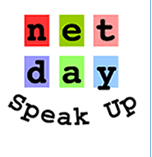An editorial column in Time Magazine by Claudia Wallis about the emerging Math Wars in this country resonated with me, as our school district is in the midst of this battle raging in the classrooms and in the minds of our students.
Walls notes that, in a move that eerily echoes the whole language-phonics debate of the 1980s, educators and administrators, and government officials, are beginning to toss out the idea of creative and critical mathematical thinking skills (what Wallis calls “fuzzy math”) in favor of more rote learning and memorization of facts. This confusion over direction of a national math curriculum has led textbook publishers to packing their books with tons and tons of learning objectives to be covered over the span of a year … with impossible results for both teachers and students.
In my school district, a group of teachers spent years meeting and discussing and formulating an approach that balanced creative thinking and basic math facts, only to have the central office do a top-down move that is shifting us towards textbook-centered classroom instruction (read this page, do these problems, take this quiz, move on). This shift has not been viewed as positive by many classroom teachers. But the administration is under significant pressure from our state to increase our standardized math scores and they see this as a way to solidify the curriculum across all of our schools.
Wallis urges school districts and teachers to look to the National Council of Teachers of Mathematics for guidance. The NCTM has begun issuing some grade-level guidelines for math skills, and they are streamlining expectations so that one year builds upon the next.
“If the script follow the Reading Wars, what comes next will be dreary times-table recitats in unison, dull new text books that faily to inspire understanding, and drill, drill, drill much like the unhappy scenes in many of today’s ‘Reading First’ classrooms . And that would be just another kind of fiasco … Kids will learn their times tables for sure, but they will also learn to hate math.” — Wallis, Time Magazine, November 27, 2006.
Peace (in numbers and words) ,
Kevin








